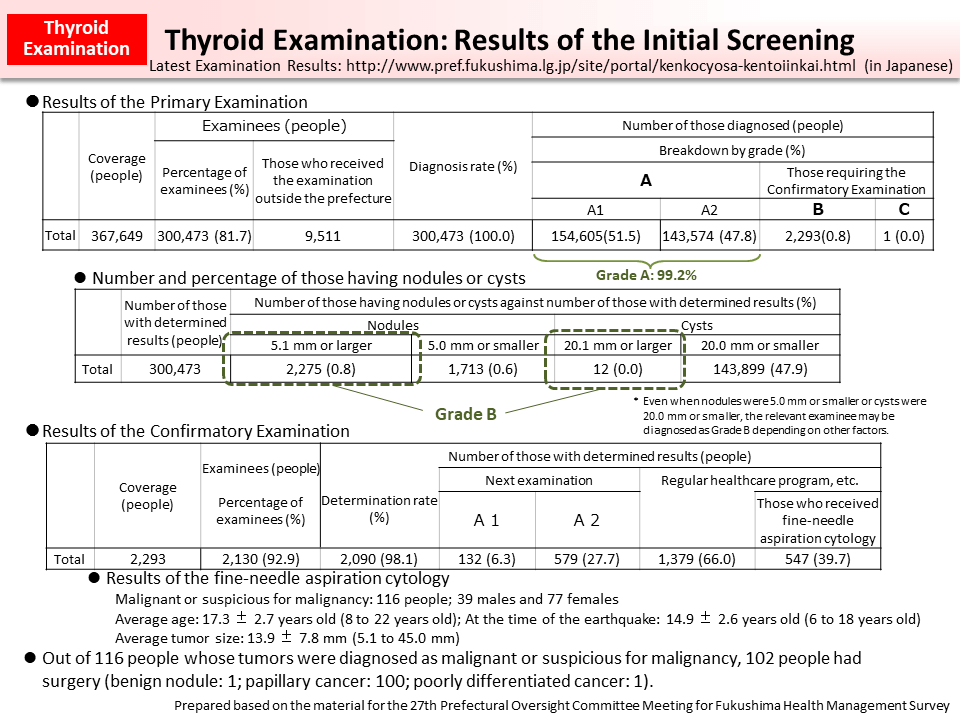Thyroid Examination: Results of the Initial Screening
These are the final results of the Initial Screening, which was the very first Thyroid Examination.
Examinees diagnosed as Grade A in the Primary Examination accounted for 99.2% of the total, while those diagnosed as Grade B accounted for 0.8%. It became clear that most of those diagnosed as Grade A2 had cysts of 20 mm or smaller and that those diagnosed as Grade B had nodules of 5.1 mm or larger.
In the Confirmatory Examination, as a result of a more accurate ultrasound examination and other tests, 34%, or approximately one out of three who received the Confirmatory Examination, were diagnosed as being equivalent to Grade A and were recommended to receive the next periodic examination in the same manner as those diagnosed as Grade A in the Primary Examination. This is because those who were suspected to have any abnormalities were diagnosed as Grade B just to be safe in the Primary Examination, and such people include those eventually diagnosed as Grade A in the Confirmatory Examination as a result of comprehensive and objective judgments through a more detailed examination, etc.
Among the examinees receiving the Confirmatory Examination, 66% were shifted to ordinary medical care covered by health insurance and most of them have been advised to receive another thyroid examination six months to one year later, as determined by the responsible doctor, based on individual findings and circumstances.
Furthermore, 39.7% received fine-needle aspiration cytology, and out of 116 examinees whose tumors were diagnosed as malignant or suspicious for malignancy, 102 had surgery. It is not that all patients whose tumors are diagnosed as malignant or suspicious for malignancy have surgery. Whether to have surgery or not is decided depending on the individuals' situations on a case-by-case basis through consultations among doctors in charge, patients themselves, and their families.
- Included in this reference material on March 31, 2016
- Updated on December 1, 2017

